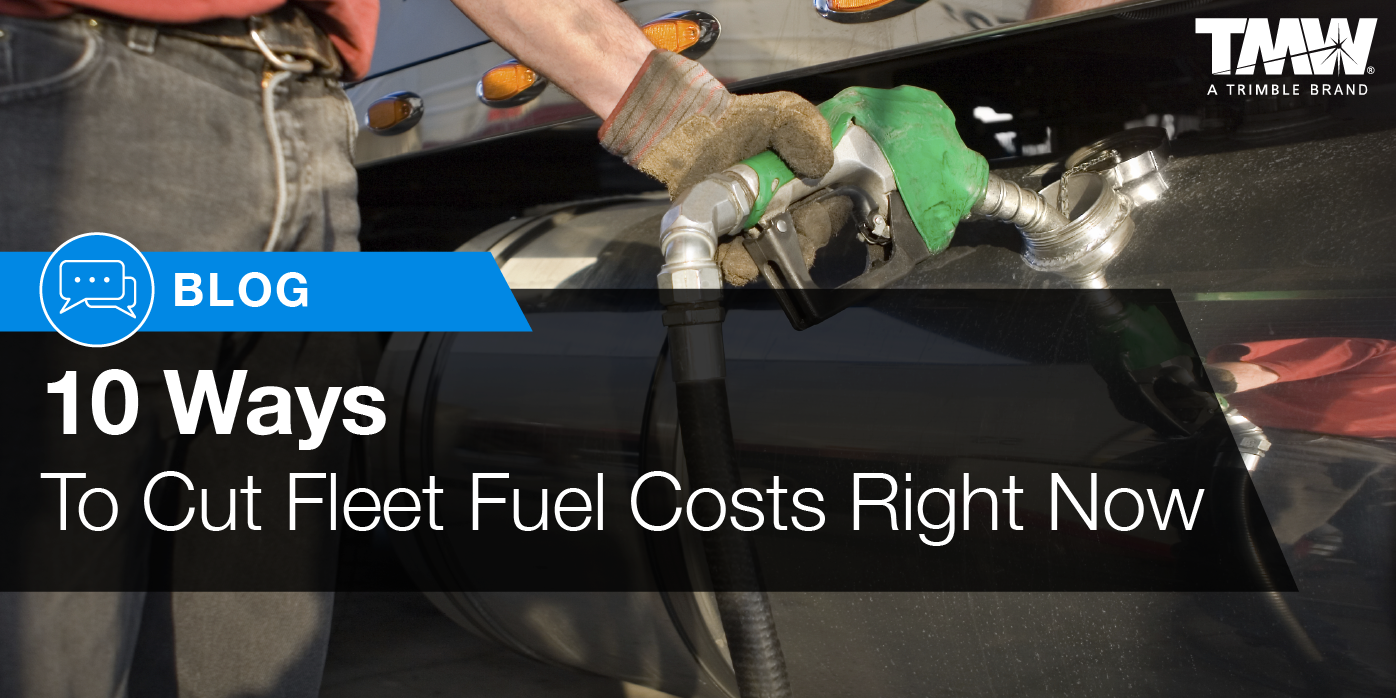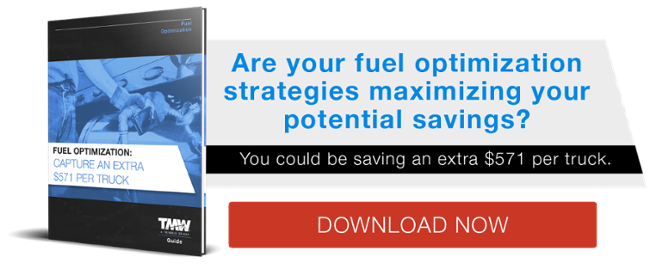
Imagine being put in charge of finding ways to boost your company’s bottom line. You automatically think of two ways: a huge influx of profitable new business or a significant reduction in operating costs.
However, you know that option number one isn’t likely. So, you begin rummaging through the books looking for any and every way to save a penny. Knowing that your top three costs are equipment, driver wages and fuel, which is easiest to control?
Driver wages are not the best place to look. Expect that cost to rise.
You can negotiate better deals on assets, and you can control your maintenance cost, though there is a known correlation between age of fleet and maintenance cost.
The best answer: Curtailing Fuel Costs.
If your company isn’t actively searching for the best ways to optimize the fleet’s fuel usage, you are likely wasting tens or hundreds of thousands of dollars each year. When prices go up and business remains stagnant, the company loses money. When prices go down and business is constant, the company can save a bit of money. The thing about fuel prices is that they are always in flux and vary across different regions.
No matter which way fuel prices are trending, here are 10 ways you can cut fleet fuel costs right now:
- Plan your route: Knowing exactly where to go, how to avoid time-consuming routes and how to properly map to the next location can significantly reduce out-of-route miles, which can limit overall fuel consumption.
- Get the best bang for your buck: If there’s enough fuel in the tank to make it to a less expensive fueling station, then why not take advantage of the best deal? Don’t unnecessarily fill the tank before the driver leaves their location just to reduce the delivery time, especially if it saves more money than the time it takes to pull off the highway.
- Upgrade to more fuel-efficient truck engines: If your fleet is operating older trucks, then, most likely, your trucks’ engines have older parts, which are less fuel-efficient. Also consider aerodynamics on the truck and trailer. Out with the old and in with the new.
- Avoid costly taxes when possible: Different states have different IFTA rates. For example, prices may be $.10/gallon higher at the state line, but IFTA Rate differences may make that apparent higher price actually more cost effective, and it’s hard to know by just looking at the Posted Price if you don’t know the IFTA Rates by state. Knowing this information could save money by having a vehicle fill up in one state before crossing state lines and being subjected to higher effective fuel prices after neutralizing the IFTA Rate variance.
- Negotiate fuel discounts: Negotiating fuel discounts with vendors can significantly improve your bottom line, but you have to be willing to ensure that your fleet only fills up at the vendor’s locations a certain percent of the time. If your company isn’t big enough to negotiate its own discount contract, join a fuel-buying group of other small fleet operators to gain leverage. You can also negotiate point-of-sale discounts to leverage even more savings.
- Train drivers how to manage fuel: Driving habits, such as how you start and stop your vehicle or how you shift gears, may seem like inconsequential habits when it comes to fuel efficiency, but bad driving can rack up enormous fuel bills.
- Slow down: Fast speeds equals more fuel consumption. Lowering your fleets average speed from 70 miles per hour down to just 65 can translate to a reduction in fuel consumption by up to 6 percent. Experts also recommend that the ideal travel speed for trucks is 55 miles per hour, so find the “sweet spot” for your company and make those changes.
- Use cruise control: Research has shown that manually operating the gas pedal uses more fuel because of the variations in speed, from slowing down and speeding up. Using cruise control saves fuel by ensuring a more consistent speed.
- Ensure proper maintenance: Inflate the tires to the correct levels. Research has shown that “soft tires” slow you down and could cut gas mileage by up to 10 percent. Also, repair any damage to the body of the truck. Damage causes more wind resistance and drag, so make sure that your fleet is smooth.
 Plan, Plan, Plan: It’s important to know what fueling stations are in your network along the route and the prices of each. Don’t unnecessarily fill up at one vendor when you can buy more fuel at a cheaper stop along the route. Also, planning routes to avoid bad weather and traffic can cut down on time spent in traffic wasting fuel. These “extra” miles directly add to more fuel costs.
Plan, Plan, Plan: It’s important to know what fueling stations are in your network along the route and the prices of each. Don’t unnecessarily fill up at one vendor when you can buy more fuel at a cheaper stop along the route. Also, planning routes to avoid bad weather and traffic can cut down on time spent in traffic wasting fuel. These “extra” miles directly add to more fuel costs.
While the reasons listed above are manual ways that you can save fuel, there’s a more efficient process that can add a lot of value to your company. No matter what your business is, if you want to optimize fuel usage down to the penny and boost the bottom line, then a fuel management solution may be right option for you. Each driver can get easy-to-follow and stop-by-stop fueling details transmitted instantly to in-cab computers or mobile devices for ultimate convenience. The system also generates reports so that you can see what is working and what isn’t.
Fuel optimization software can automate many of these essential processes.
With fuel prices constantly fluctuating, there are a number of reasons to implement fuel purchase optimization software that make good business sense. While the reasons listed above are manual ways that you can do to save fuel, a software solution can automate those processes for you. Imagine being able to save four cents per gallon on a fleet of 200 trucks that operates at a level of 6.8 miles per gallon. It can add up to savings of over $100,000 per year, depending on how many miles they run. Now, multiply that by the size of your fleet. It could add up to savings of over half a million dollars, or more, if your fleet is more than 1000 trucks.
The technology that is available allows for enhanced data reporting and better fueling options. Fuel optimization works by monitoring and auditing your discounts from fuel providers and fuel cards, then enabling you to negotiate future contracts with better information. The solution integrates with all major dispatch systems without adding more work for the operations staff. And, it automatically sends the fuel plan and route to the drivers and informs management about whether drivers are complying with the plan that was provided.
Remember, the key to saving money is fueling your entire fleet, economically.
ExpertFuel from TMW is a business-class fuel purchase optimization solution designed to help truckload carriers control diesel fuel costs, improve long-haul fleet profitability and integrate with daily operations and dispatch including driver management. Contact TMW this week to explore the possibilities of decreasing your fuel costs above and beyond your regular fuel discounts.
Read TMW’s white paper, “Fuel Optimization” for more information on the benefits of implementing a fuel management system and how it will boost your company’s bottom line.



